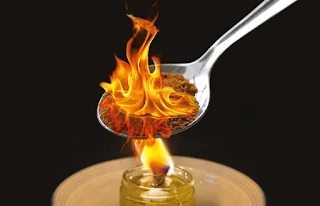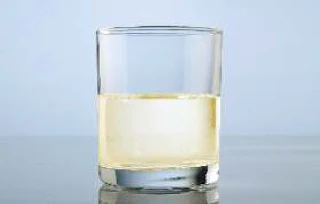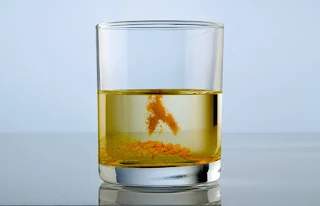Food is essential for sustenance of life. Adulteration of food deceive the consumer and can cause risk to their health. The purpose of this manual is to list out common methodologies available for food adulterants generally found in India.
The scope of this manual is meant for household, which can induce awareness among the consumer about food safety.
Test 1 : Detection of foreign resin in asafoetida (hing)
Test Method 1
Adulterated
Test Method 2
Non-Edible Gum/Resin
Test 2 : Detection of papaya seeds in black pepper
Test Method 1
Adulterated
Test Method 2
Papaya seeds
Test 3 : Detection of light black berries in black pepper
Testing Method:
Light black berries
Test 4 : Detection of soap stone or other earthy matter in asafoetida (hing)
Testing Method:
Adulterated
Test 5 : Detection of artificial/water soluble synthetic colours in chilli powder
Testing Method:
Adulterated
Test 6 : Detection of light black berries in black pepper
Testing Method:
Adulterated
Test 7 : Detection of saw dast in chilli powder
Testing Method:
Saw dust
Test 8 : Detection of starch in asafoetia
Testing Method:
Starch
Test 9 : Detection of chalk in common salt
Testing Method:
Chalk
Test 10 : Detection of exhausted cloves in clove
Testing Method:
Volatile oil extracted cloves
Test 11 : Detection of cassia bark in cinnamon
Testing Method:
Cassia
Test 12 : Detection of grass seeds coloured with charcoal dust in cumin seeds
Testing Method:
Adulterated
Test 13 : Detection of argemone seeds in mustard seeds
Testing Method:
Argemone seeds
Test 14 : Detection of lead chromate in turmeric whole
Testing Method:
Adulterated
Test 15 : Detection of artificial colour in turmeric powder
Testing Method:
Adulterated
Test 16 : Detection of sawdust and powdered bran in powdered spices
Testing Method:
Adulterated
Test 17 : Differentiation of common salt and iodized salt
Testing Method:
Common salt
Test 18 : Detection of coloured dried tendrils of maize cob in saffron
Testing Method:
Coloured tendrils
The scope of this manual is meant for household, which can induce awareness among the consumer about food safety.
Test 1 : Detection of foreign resin in asafoetida (hing)
Test Method 1
- Burn small quantity of asafoetida in a stainless steel spoon.
- Pure asafoetida will burn like camphor.
- Adulterated asafoetida will not produce bright flame like camphor.
 |
| Pure |
Adulterated
 |
| Adulterated |
Test Method 2
- Powder a gram of asafoetida and take it in a glass container.
- Add one tea spoon of water. Mix thoroughly by shaking.
- Milky white solution with no sediments represents pure asafoetida.
 |
| Asafetida |
Non-Edible Gum/Resin
 |
| Non-Edible Gum/Resin |
Test 2 : Detection of papaya seeds in black pepper
Test Method 1
- Add some amount of black pepper to a glass of water.
- Pure black pepper settles at the bottom.
- In the adulterated black pepper, papaya seeds float on the surface of water.
 |
| Pure |
Adulterated
 |
| Adulterated |
Test Method 2
- Spread spice on a white paper.
- Observe the appearance of the sample using the magnifying glass.
- Black pepper is brown in color. It has a wrinkled surface and has a characteristic smell and pungent taste.
- The papaya seeds have shrunken smooth surface and oval shape. It is greenish brown or blackish brown in color and has a repulsive flavor.
 |
| Black Papper |
Papaya seeds
 |
| Papaya seeds |
Test 3 : Detection of light black berries in black pepper
Testing Method:
- Press the berries with the help of fingers.
- Light berries will break easily while black berries of pepper will not break.
 |
| Black pepper |
Light black berries
 |
| Light black berries |
Test 4 : Detection of soap stone or other earthy matter in asafoetida (hing)
Testing Method:
- Shake little portion of the sample with water and allow to settle.
- Pure asafoetida will not leave any soap stone or other earthy matter at the bottom.
- If asafoetida is adulterated, soap stone or other earthy matter will settle down at the bottom.
 |
| Pure |
Adulterated
 |
| Adulterated |
Test 5 : Detection of artificial/water soluble synthetic colours in chilli powder
Testing Method:
- Sprinkle chilli powder on the surface of water taken in a glass tumbler.
- The artificial colourants will immediately start descending in colour streaks.
 |
| Pure |
Adulterated
 |
| Adulterated |
Test 6 : Detection of light black berries in black pepper
Testing Method:
- Float the sample of black pepper in alcohol (rectified spirit).
- The mature black pepper berries sink while the light black pepper floats.
 |
| Pure |
Adulterated
 |
| Adulterated |
Test 7 : Detection of saw dast in chilli powder
Testing Method:
- Add the sample to water.
- The saw dust will float at the surface of water while Chilli powder will settle down in bottom.
 |
| Chilli powder |
Saw dust
 |
| Saw dust |
Test 8 : Detection of starch in asafoetia
Testing Method:
- Add the sample to water.
- The artificial colourants will immediately start descending in colour streaks.
 |
| Asafoetia |
Starch
 |
| Starch |
Test 9 : Detection of chalk in common salt
Testing Method:
- Stir a spoonful of sample of salt in a glass of water.
- The presence of chalk will make solution white and other insoluble impurities will settle down.
 |
| Common salt |
Chalk
 |
| Cloves |
Test 10 : Detection of exhausted cloves in clove
Testing Method:
- Take some water in a glass and put cloves.
- Genuine cloves will settle down at the bottom while exhausted cloves will float on surface.
 |
| Cloves |
Volatile oil extracted cloves
 |
| Volatile oil extracted cloves |
Test 11 : Detection of cassia bark in cinnamon
Testing Method:
- Take small quantity of cinnamon in a glass plate.
- If adulterated, on close visual examination, cassia bark that comprises of several layers in between the rough outer and inner most smooth layers can be differentiated from cinnamon.
- Cinnamon barks are very thin that can be rolled around a pencil or pen. It has a distinct smell.
 |
| Cinnmon |
Cassia
 |
| Cassia |
Test 12 : Detection of grass seeds coloured with charcoal dust in cumin seeds
Testing Method:
- Rub small amount of cumin seeds on palms.
- If palms turn black, adulteration is indicated.
 |
| Pure |
Adulterated
 |
| Adulterated |
Test 13 : Detection of argemone seeds in mustard seeds
Testing Method:
- Take small quantity of mustard seeds in a glass plate.
- Examine visually for the argemone seeds.
- Mustard seeds have a smooth surface and when pressed, inside it is yellow in colour.
- Argemone seeds have grainy, rough surface and are black in colour. When pressed, inside it is white in colour.
 |
| Mustard seeds |
Argemone seeds
 |
| Argemone seeds |
Test 14 : Detection of lead chromate in turmeric whole
Testing Method:
- Add small quantity of turmeric whole in a transparent glass of water.
- Pure turmeric will not leave any colour.
- Adulterated turmeric appears to be bright in colour and leaves colour immediately in water.
 |
| Pure |
Adulterated
 |
| Adulterated |
Test 15 : Detection of artificial colour in turmeric powder
Testing Method:
- Add a teaspoon of turmeric powder in a glass of water.
- Natural turmeric powder leaves light yellow colour while settling down.
- Adulterated turmeric powder will leave a strong yellow colour in water while settling down.
 |
| Pure |
Adulterated
 |
| Adulterated |
Test 16 : Detection of sawdust and powdered bran in powdered spices
Testing Method:
- Sprinkle powdered spices on the water surface.
- Pure spices will not leave any saw dust/powdered bran on the surface of water.
- If spices are adulterated, saw dust/powdered bran will float on the surface.
 |
| Pure |
Adulterated
 |
| Adulterated |
Test 17 : Differentiation of common salt and iodized salt
Testing Method:
- Cut a piece of potato, add salt and wait for a minute.
- Add two drops of lemon juice.
- If it is iodised salt, blue colour will develop.
- In the case of common salt, there will be no blue colour.
 |
| Iodised salt |
Common salt
 |
| Common salt |
Test 18 : Detection of coloured dried tendrils of maize cob in saffron
Testing Method:
- Genuine saffron will not break easily like artificial. Artificial saffron is prepared by soaking maize cob in sugar and colouring it with coal tar.
- Take a transparent glass of water and add small quantity of saffron.
- If saffron is adulterated, the artificial colour dissolves in water rapidly. A bit of pure saffron when allowed to dissolve in water will continue to give its saffron colour so long as it lasts.
 |
| Saffron |
Coloured tendrils
 |
| Coloured tendrils |
.webp)




























No comments:
Post a Comment